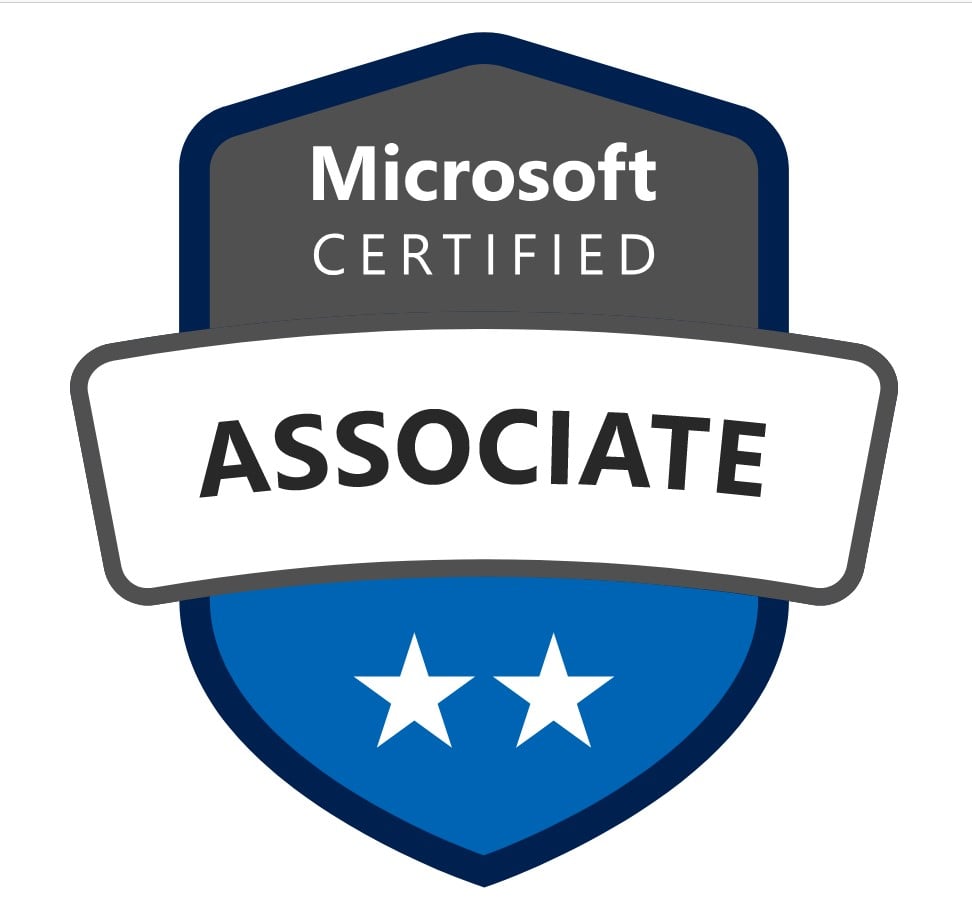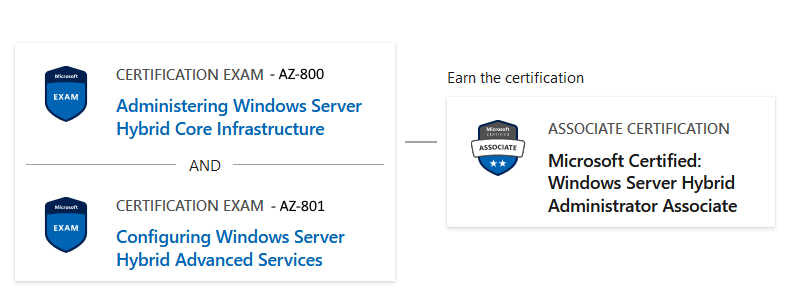Administering Windows Server Hybrid Core Infrastructure (AZ-800)
- Per deelnemer: € 2.045,00 excl. BTW
- Examen Upgrade: € 205,00 excl. BTW
-
4 dagen
-
Max 16 deelnemers
- Direct inschrijven

 4 dagen
4 dagen

 Max 16 deelnemers
Max 16 deelnemers Deze AZ-800 training leert jou, als IT-professional, hoe je de core Windows Server workloads en diensten kan beheren. Met behulp van on-premises, hybride en cloud technologieën. Je leert hoe je on-premises en hybride oplossingen zoals identiteit, beheer, compute, netwerken en opslag in een Windows Server hybride omgeving kan implementeren en beheren.
Daarnaast is deze training de optimale voorbereiding op het bijbehorende ‘AZ-800: Administering Windows Server Hybrid Core Infrastructure’ examen.
Deze training is geschikt voor IT-professionals en Windows Server Hybrid beheerders. Die werkervaring hebben met Windows Server en die de mogelijkheden van hun on-premise omgevingen willen uitbreiden door on-premise en hybride technologieën te combineren.
Na het volgen van deze AZ-800 cursus beschik je over de volgende kennis en/of vaardigheden:
Daarnaast bereidt deze training je voor op 1 van de 2 examens die je moet afleggen om het Azure certificaat: Microsoft Certified: Windows Server Hybrid Administrator Associate te behalen
Wil je deze Azure AZ-800 cursus volgen, dan is het belangrijk dat je kennis en/of ervaring hebt met:
Twijfel je of deze training past bij jouw kennis en ervaring? Neem contact met ons op voor vrijblijvend advies.
Deze training wordt in het Nederlands en Engels gegeven. Het bijbehorende Microsoft examen “Exam AZ-800: Administering Windows Server Hybrid Core Infrastructure” wordt in het Engels afgenomen.
Bij de training ontvang je digitaal Microsoft Official Courseware. De lestijden zijn van 9.00 tot 16.30.
Wanneer je je inschrijft voor deze AZ-800 training kun je een Examen Upgrade boeken voor het AZ-800 Examen: Administering Windows Server Hybrid Core Infrastructure. Je ontvangt dan een Examenvoucher, dit is benodigd om deel te nemen aan het officiële online Microsoft examen.
Let op: Wil je het certificaat: Microsoft Certified: Windows Server Hybrid Administrator Associate behalen? Dan moeten er 2 examens worden afgelegd. Namelijk het bovengenoemde AZ-800 examen en het AZ-801 examen.

Wij zijn blij met jou als loyale cursist. Daarom ontvang je 5% loyaliteitskorting op onze trainingen wanneer je je inschrijft voor een volgende training. Meer info over loyaliteitskorting.
Wil je hierna je Azure kennis verder uitbreiden? Bekijk de AZ-801 Training – Configuring Windows Server Hybrid Advanced Services of onze andere Azure trainingen.
Module 1: Identity services in Windows Server
After completing module 1, students will be able to:
Module 2: Implementing identity in hybrid scenarios
After completing module 2, students will be able to:
Module 3: Windows Server administration
After completing module 3, students will be able to:
Module 4: Facilitating hybrid management
After completing module 4, students will be able to:
Module 5: Hyper-V virtualization in Windows Server
After completing module 5, students will be able to:
Module 6: Deploying and configuring Azure VMs
After completing module 6, students will be able to:
Module 7: Network infrastructure services in Windows Server
Module 8: Implementing hybrid networking infrastructure
After completing module 8, students will be able to:
Module 9: File servers and storage management in Windows Server
After completing module 9, students will be able to:
Module 10: Implementing a hybrid file server infrastructure
After completing module 10, students will be able to:
 Online hybride training Taal: EN
Online hybride training Taal: EN
 Nieuwegein Taal: NL
Nieuwegein Taal: NL
 Online hybride training Taal: NL
Online hybride training Taal: NL
 Online hybride training Taal: EN
Online hybride training Taal: EN
 Amsterdam Taal: NL
Amsterdam Taal: NL
 Online hybride training Taal: NL
Online hybride training Taal: NL
Kosten per deelnemer: € 2.045,00 excl. BTW
Max. deelnemers: 16
De genoemde cursustarieven zijn per persoon, exclusief 21% BTW ( BTW nummer wordt vermeld op de factuur), inclusief alle actuele lesmaterialen, een naslagwerk (Pdf) en een certificaat van deelname. Er zijn dus geen bijkomende kosten achteraf.
Als je je aanmeldt met een groep van vijf of meer personen voor een cursus op jouw bedrijfslocatie (in-company), dan kunnen wij een aantrekkelijk groepstarief aanbieden. Voor informatie over onze groepstarieven kun je telefonisch via 020 – 820 83 62 contact opnemen of hier een offerte aanvragen.
Werkgevers
Als werkgever kun je de volledige opleidingskosten voor werknemers aftrekken als bedrijfskosten. Dit geldt voor de opleiding zelf, maar ook voor andere kosten als boeken, inschrijfgeld, administratiekosten, het certificaat of extra begeleiding. Bij SignOn zijn al deze kosten al bij de prijs inbegrepen.
Heb je vragen of wil je meer informatie? Neem dan vrijblijvend contact op via info@signon.nl of bel ons op 020 – 820 83 62.
Kies de lesmethode die het best bij je past. Deze training kun je op de volgende manieren volgen:
Meldingen